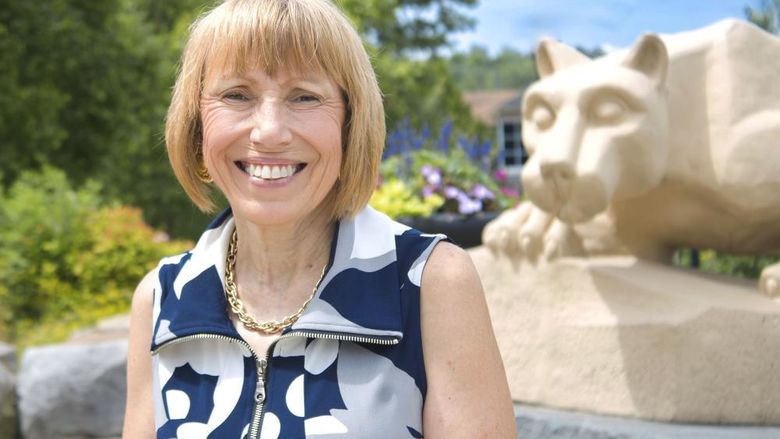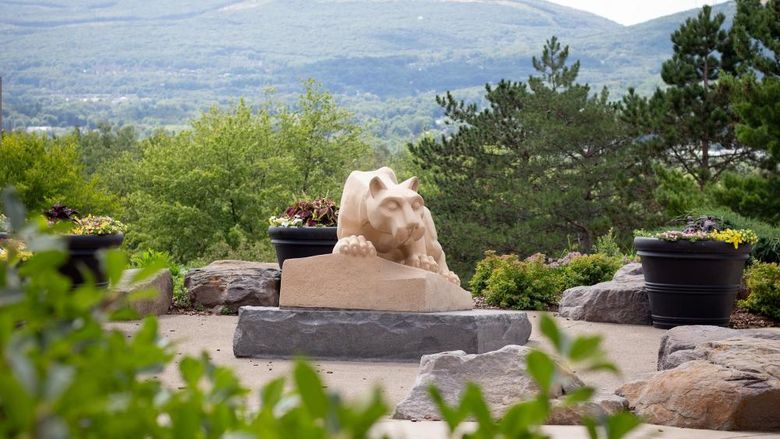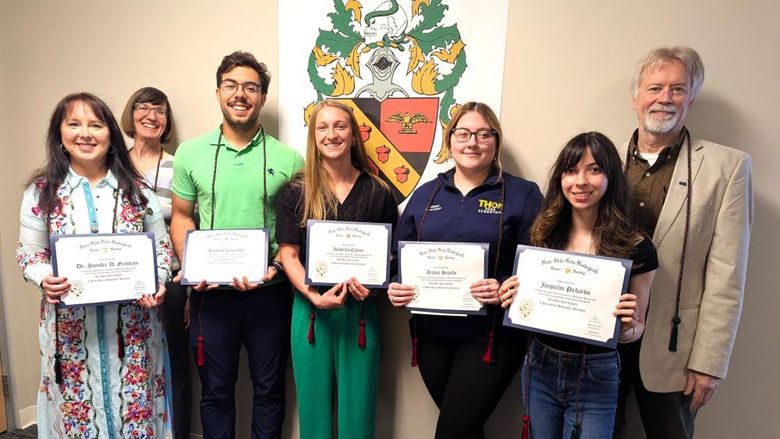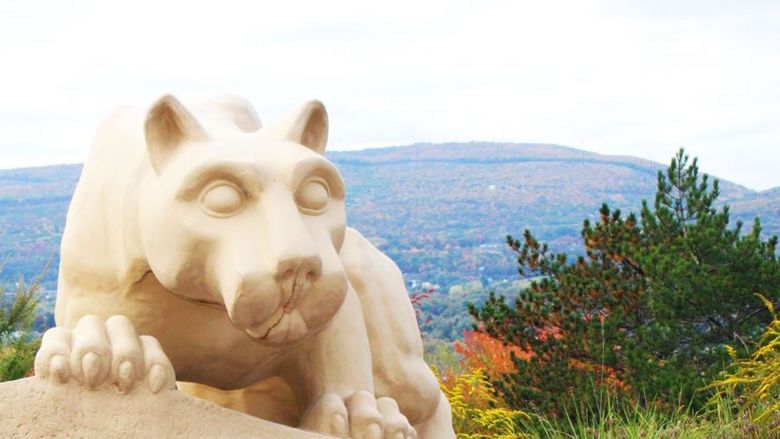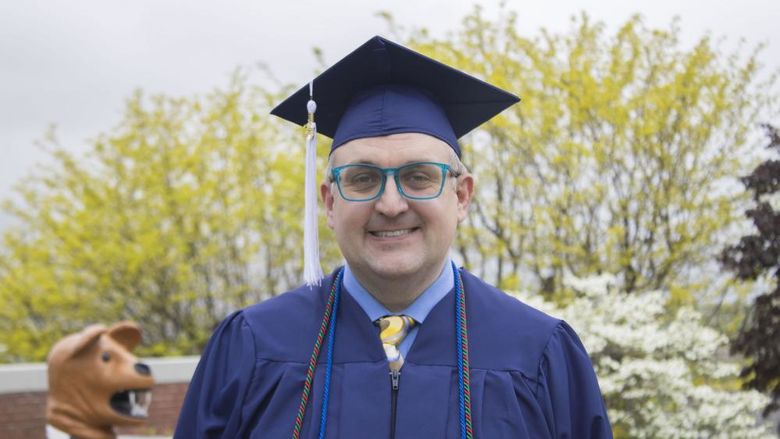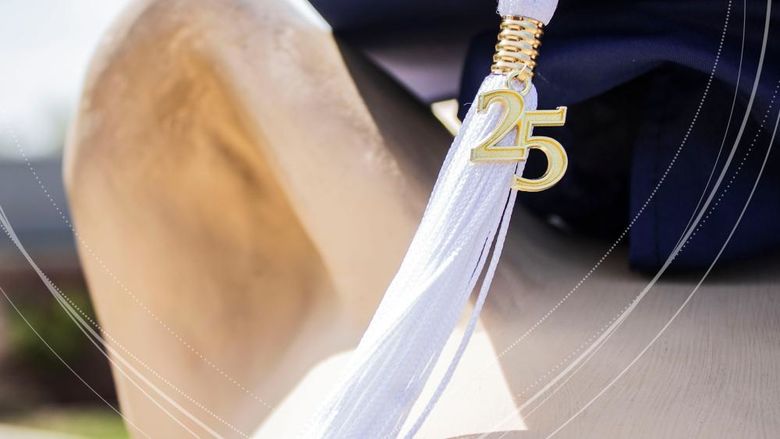
Penn State Scranton Associate Professor of Biology Meg Van Etten, far left, works in the campus’ biology lab with students on their “Plant the Moon” research project. Students from left are: Robert Davidson, Kingsley Mangan, Catherine Barbosa and Cameron Zynel. Missing from photo is Cailie Thoman.
DUNMORE, Pa. — Who can grow the best crops in lunar or Martian soil? That’s what Penn State Scranton’s Associate Professor of Biology and Biology and Science Program Coordinator Megan Van Etten and five students are working to find out as part of the “Plant the Moon Challenge.” The team will present their work at the campus’ Undergraduate Research Fair and Exhibition today (April 9) and submit their final report to the national challenge on April 13.
The competition is a global science experiment and educational research challenge sponsored by the Institute of Competition Sciences, a national organization focused on education and workforce development via academic challenges that motivate and engage participants.
The competition encourages students and professionals to test which nutrients, fertilizers or other modifications to lunar regolith — the loose, soil-like material covering solid rock on non-Earth bodies — are necessary to grow sustainable, nutrient-rich food sources for future astronauts.
Global science experiment
The institute provides participants with a sample of regolith. After an eight-week growing period, participants submit final project reports, with their findings contributing to a global network of researchers advancing space exploration. The project aims to support long-duration space missions by developing methods for growing plants on the moon.
The group started their project in February, planting amaranth, a perennial, grain-like species that is not eaten frequently in the U.S. but is more commonly consumed in other countries. The growing period ending on March 30, and the team’s final report is due on April 13. The team will learn if their work garnered any awards on May 7. Even if they don’t earn recognition from the Institute of Competition Sciences, the team said the value of the experience is award enough.
Katherine Barbosa, a fourth-year biology student, took a class with Van Etten last semester, during which they studied plants in space-like conditions.
“We were looking up mystery genes and plants that were in space-like conditions, and I was really interested in that,” Barbosa said. “I told Dr. Van Etten how much it interested me, and she pitched the idea of doing this research to her classes. That’s how we formed this group of five students.”
Bobby Davidson, a first-year student on a pre-med track at Penn State Scranton, joined the project to gain experience.
“I wanted to get involved with this research project for the experience because I was interested in the topic,” Davidson said.
Barbosa also shared her excitement about the project. “For me, particularly when I would come in to water our plants, it was really exciting for me because I'd like to see how they were doing and watch their progress,” Barbosa said. “It's definitely the highlight of my day when I do get to come in and water them. It's very enjoyable for me.”
Kingsley Mangan, a third-year biology major, said the project provided an opportunity to explore their interest in space-related research.
“For me, the process of designing this experiment was really interesting and trying to find a balance of what people haven’t done yet and something that would be useful, like our inclusion of biochar,” Mangan said, explaining that biochar is a type of charcoal that can store carbon and help improve plant health.
Cameron Zynel, a fourth-year biology major, said he was excited to participate in the competition. “I think it’s really cool to be a part of this bigger competition because it feels more professional,” Zynel said. “I realize I’m not just doing this stuff for a grade or for a class. I’m doing it for deadlines. Everyone has to take on their own responsibilities and it’s fun.”
Student Cailie Thoman said this has helped her gain more of a hands-on experience in an area that is beyond the classroom. “I was excited to be able to be able to work with a team on something where the outcome wasn't fully known,” Thoman said.
Van Etten emphasized the significance of the project and the group dynamic.
Van Etten added that the students' research could have real-world implications for space exploration. “These students are doing this project to contribute knowledge that people might use,” she said.
This project is just so cool — growing plants in moon soil. I mean, who doesn’t want to do that? I like having a group dynamic and I think it’s easier when there is already some sort of structure around a project like growing plants on the moon and figuring out a way to do it. A bigger group really works well for this kind of project.—Meg Van Etten , associate professor of biology and biology and science program coordinator
Undergraduate research fair
In addition to working on this project as part of their independent research for the “Plant the Moon Challenge,” Van Etten’s students will present this project at the campus’ Undergraduate Research Fair and Exhibition today (April 9).
The event takes place in the campus’ Study Learning Center and allows students who took part in undergraduate research during the spring semester an opportunity to present their research to be judged in several categories, including research poster presentations, oral research presentations, visual arts display and creative writing.
Penn State encourages students to engage with faculty mentors in active research not only in the laboratory sciences but also in the scholarship and creative activities of all disciplines. Penn State Scranton’s Undergraduate Research Fair and Exhibition is supported by funding from the Robert T. Moffat Family Charitable Trust.
